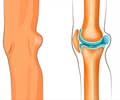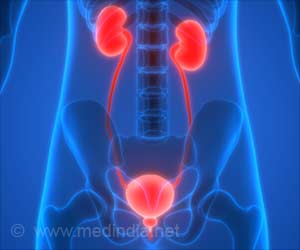One of the advantages of Telerehabilitation is that patients receive the same quality services in their homes with predetermined appointments sans travel.

Post-surgical rehabilitation can be costly, time-consuming and challenging, especially when the patient or physical therapist must travel a significant distance to receive or deliver rehabilitation services. In a preliminary study, researchers randomly divided 205 patients scheduled for hospital discharge following TKR into two groups: one to receive face-to-face home visits, or "standard" post-surgical rehabilitation, and another to receive in-home telerehabilitation using special interactive video conferencing.
Both patient groups received the same instructions and number of interactions with a physical therapist over a two-month period. Patients were evaluated prior to TKR, immediately after the two-month rehabilitation program, and again at four months post-hospital discharge. Standard validated outcome measures were used to assess pain, stiffness, overall function, range of motion, strength, ability to participate in sports and daily activities, and overall life quality.
The demographic and clinical characteristics of the two patient groups were similar at baseline, and nearly identical following rehabilitation. More specifically:
- Pain, function and stiffness scores were identical two months following hospital discharge in both the standard and telerehabilitation groups.
- At four months after discharge from the hospital, these outcomes remained comparable between the two groups.
- Range of motion, strength, activity and quality of life outcomes also were similar between the groups at two and four months after hospital discharge.
"For patients, the advantages of telerehabilitation are numerous. First, they may receive the same quality services in their home environment with predetermined appointments and without travel. Many patients do not receive appropriate rehabilitation, or a limited number of rehabilitation appointments, because of the required travel time or a shortage of available therapists," said Moffet.
"Telerehabilitation also shows promise in rural or underserved regions, and may substitute for, or complement, face-to-face care," said Moffet. "This is important information for patients, as well as surgeons, clinicians and clinic managers who are interested in incorporating this type of innovative service into their practice as it becomes more widely available."
Advertisement












